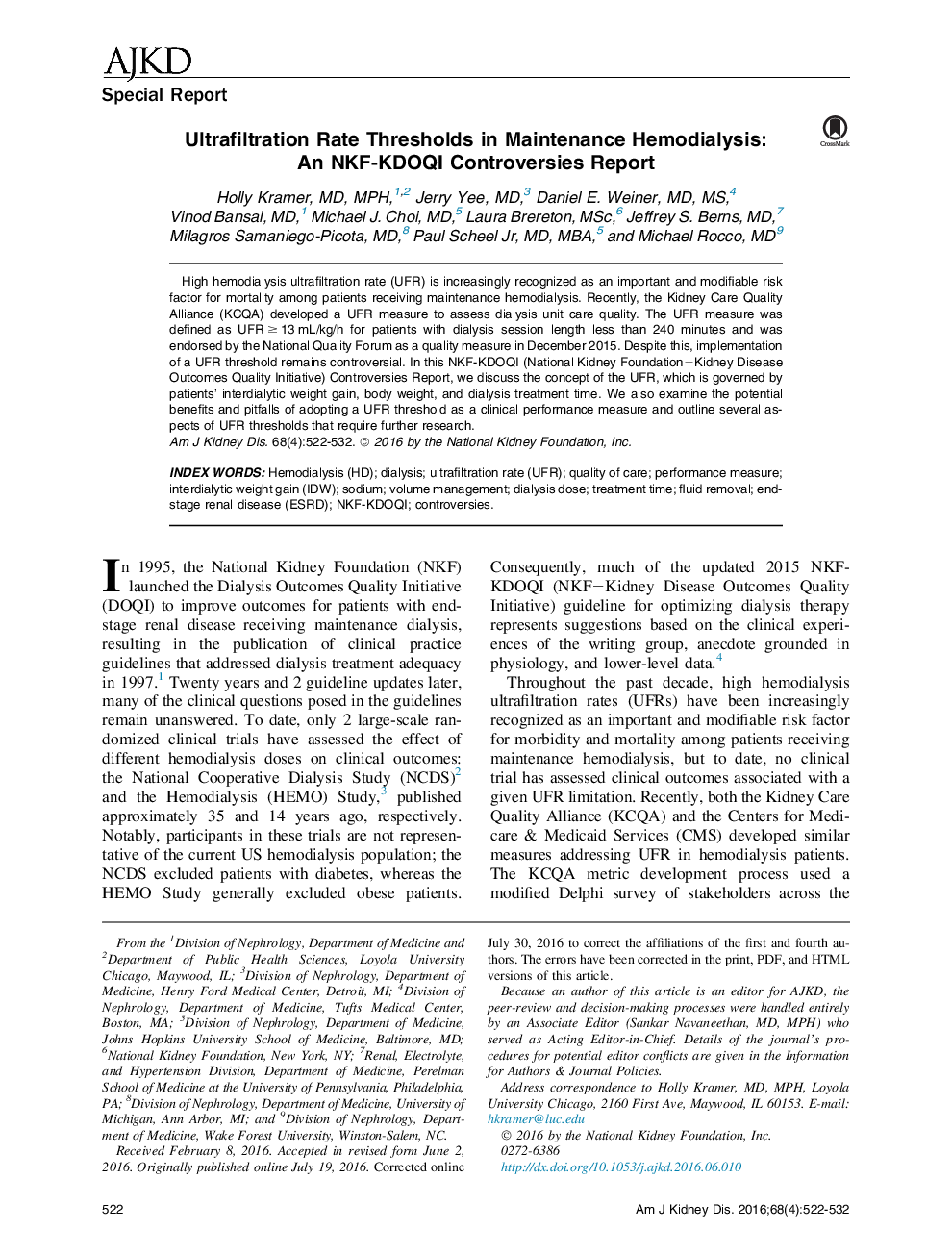| Article ID | Journal | Published Year | Pages | File Type |
|---|---|---|---|---|
| 5685746 | American Journal of Kidney Diseases | 2016 | 11 Pages |
Abstract
High hemodialysis ultrafiltration rate (UFR) is increasingly recognized as an important and modifiable risk factor for mortality among patients receiving maintenance hemodialysis. Recently, the Kidney Care Quality Alliance (KCQA) developed a UFR measure to assess dialysis unit care quality. The UFR measure was defined as UFR â¥Â 13 mL/kg/h for patients with dialysis session length less than 240 minutes and was endorsed by the National Quality Forum as a quality measure in December 2015. Despite this, implementation of a UFR threshold remains controversial. In this NKF-KDOQI (National Kidney FoundationâKidney Disease Outcomes Quality Initiative) Controversies Report, we discuss the concept of the UFR, which is governed by patients' interdialytic weight gain, body weight, and dialysis treatment time. We also examine the potential benefits and pitfalls of adopting a UFR threshold as a clinical performance measure and outline several aspects of UFR thresholds that require further research.
Keywords
Related Topics
Health Sciences
Medicine and Dentistry
Nephrology
Authors
Holly MD, MPH, Jerry MD, Daniel E. MD, MS, Vinod MD, Michael J. MD, Laura MSc, Jeffrey S. MD, Milagros MD, Paul MD, MBA, Michael MD,
